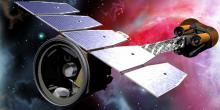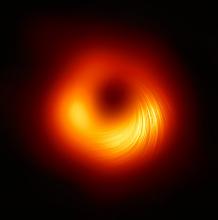Listen to today's episode of StarDate on the web the same day it airs in high-quality streaming audio without any extra ads or announcements. Choose a $8 one-month pass, or listen every day for a year for just $30.
You are here
Magnetic Birth
Starbirth is complicated. And so is trying to understand it. In recent years, for example, astronomers have been rethinking the role that magnetic fields play in the process. And they’re finding that such fields may not be as important as once thought.
A star is born from a giant cloud of gas and dust. Something squeezes the cloud, causing it to break into smaller clumps. A clump may then collapse under its own gravity, giving birth to a star.
The leading ideas have held that magnetic fields play a key role in that process. They were thought to hold back the collapse, limiting the number of stars born from a single cloud. At the same time, they were thought to play a role in the sizes of the stars that were born.
But the magnetic fields in clouds don’t appear to be as powerful as expected. That means they don’t have much influence over the scale of an entire cloud of gas and dust.
Magnetic fields do appear to play an important role on the scale of individual stars, though.
A recent study showed that the fields of embryonic stars may channel more nearby gas and dust onto the forming stars. At the same time, such a star’s magnetic field blows jets and winds of particles back out into space. That stirs up the nearby gas and dust, which limits how big the star can grow. And it can also interrupt the birth of other stars — one more complication in the birth of a star.
More about magnetic fields tomorrow.
Script by Damond Benningfield






